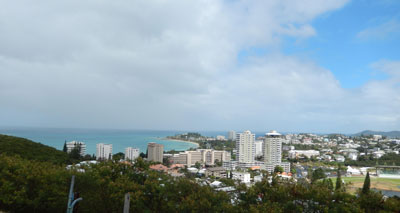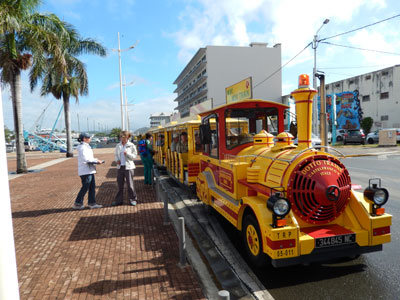Volendam in the South Pacific
This item appears on page 22 of the July 2014 issue.
An efficient and economical way to visit the South Pacific islands is by cruise ship. You unpack once, and the per-diem cost is usually less than flying to these destinations and staying in a hotel. The downside is that, generally, you have less than a day in each port.
Twice a year, major cruise lines reposition their ships from summer runs in the northern climes to the South Pacific and Southeast Asia. In 2013, I took the repositioning voyage of the MS Volendam of Holland America Line (877/932-4259).
With a single booking in an ocean-view cabin, I paid a total of $4,241, including taxes and insurance, for the cruise. Airfare from Lewiston, Idaho, to Vancouver and return to the US from Sydney, Australia, was another $1,659.
The cruise originated in Vancouver, British Columbia, on Sept. 25, but because of late flights and TSA problems, I arrived too late and missed the embarkation. A Holland America guardian angel in Vancouver named Angela arranged for me to meet the ship in Long Beach, California, before it sailed for the South Pacific on Sept. 28. (I paid extra to fly down and for two nights in a hotel.)
The itinerary, after Long Beach, included Hilo and Honolulu, Hawaii; Pago Pago, American Samoa; Suva, Fiji; Port Vila, Vanuatu; Easo, Lifou, and Nouméa, New Caledonia, with disembarkation in Sydney. The journey ended on Oct. 20.
At American Samoa, I took a ship’s excursion that was supposed to show village life. As we were forewarned, the homegrown tour buses were open-air and had unpadded wooden seats, so by the end of the tour on rough roads, we felt it.
The village visit was interesting and we got to sample some of the native food, but in terms of getting familiar with native culture, the tours on Fiji and Vanuatu were better.
At the stop at Easo on Lifou in New Caledonia, the ship anchored out from shore and tendering was necessary. There was a small town with interesting churches and a nice beach.
Except at Nouméa, there is not a large array of excursions offered in the islands. However, even with the short, one-day stops on this cruise, passengers could walk into the towns fairly easily, especially in Pago Pago and Nouméa.
One exception — at Port Vila, the cruise ship dock was about 5 kilometers from town, so, unless you know your way around, it might be better to take one of the ship’s shore excursions, at least on the first visit, so you don’t have to worry about missing the ship because a taxi had a flat tire or ran out of gas.
After that, the best option at Port Vila is taking a taxi to see some of the sights or sample the restaurants. However, some passengers reported that, once in town, the taxi drivers wanted to renegotiate the initial rate to get there. Also, the fare charged to get back to the ship was quite a bit higher than that into town.
I particularly enjoyed the Ekasup Cultural Village excursion on Vanuatu. Of course, this is not an anthropologist’s expedition into a primitive culture, but the native presenters provided knowledge of village life in understandable English and answered any question posed.
New Caledonia is a French colony and Nouméa, the capital, is very European. The ship docked right downtown, so there was plenty of opportunity for shopping and good eating.
More shore excursions were offered there than at other ports, but to see the island and also experience the town on your own in the time available, take the Yellow Tchou Tchou Train for a 2-hour trip all around the island before returning in time for lunch in town or on the ship.
The South Pacific islands live up to their reputation of being exotic and alluring destinations with interesting histories and cultures in cobalt-blue seas. Visiting them by cruise ship is an appealing option.
RICHARD REID
Clarkston, WA


